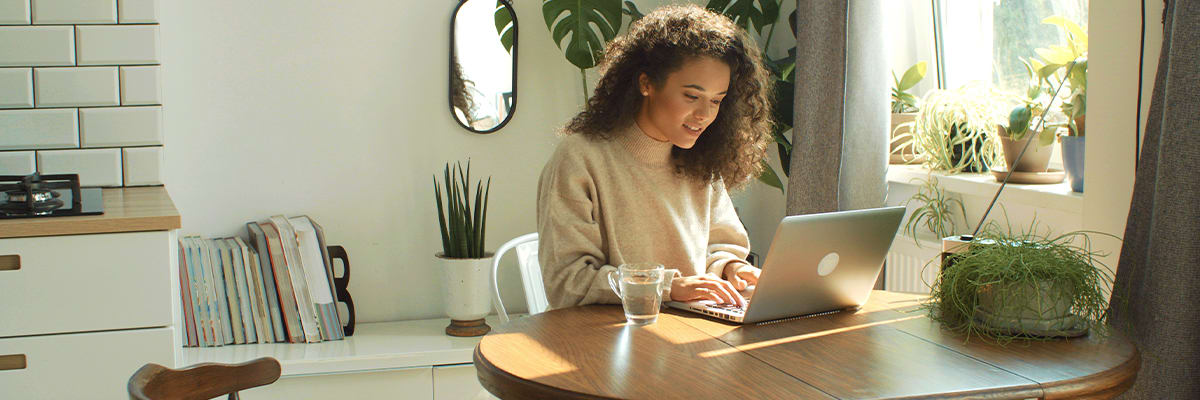
Return navigate_next
What to Do if Your Laptop Is Overheating
May 13, 2022 *
Laptops condense the functionality of much larger desktop computers into smaller devices. As a result, it’s no surprise they overheat from time to time. Although laptops have dramatically evolved and improved over the years, it’s still a common issue many users encounter.
Here’s how to stop your laptop from overheating and optimize its performance.
Start with Room Temperature
This may sound obvious, but taking the room temperature is the first place to start when diagnosing an overheating laptop. “Laptops have been designed to work within a safe temperature range, typically between 50 to 95 degrees Fahrenheit,” explains Hampshire College.

So if your laptop is sitting in a hot room that’s approaching 90 degrees, this could certainly be the culprit. Also, try to keep your laptop out of direct sunlight, as this quickly raises the temperature.
Ensure it Has Proper Ventilation
Ventilation is vital to the performance of most electronic devices, especially laptops. If they’re not getting enough airflow, it often leads to overheating. But here’s the thing: laptops are called “laptops” for a reason. They can rest on your lap while you’re using them.
But resting the device on your lap can sometimes create issues because this doesn’t always create adequate airflow. Say, for example, you’ve got a blanket over your legs, and the laptop is resting on top of the blanket. This may not allow for proper ventilation, which can lead to a laptop overheating, which brings us to our next point.
Use a Lap Desk or Laptop Cooling Pad
To keep your device ventilated, it’s important to place it on a surface that allows it to breathe. The easiest way to do this is by simply placing your laptop on a desk, at least until it cools down. If, however, you still need it to rest on your lap, you can use either a lap desk or a laptop cooling pad.
A basic lap desk starts at around $30, and a cooling pad starts at around $25.

Avoid Overworking it With Too Many Programs
Think of your laptop as a weightlifter. During a basic lifting session with average weights for an hour or so, they’re fine. But a super intense lifting session with backbreaking weights over the span of several hours will inevitably lead to burnout.
It’s the same with your laptop. If you run a few programs for a while, your laptop should function normally. However, if you overload it with strenuous programs like gaming software for several hours while running other programs in the background, it can overheat. So be aware of how many programs you’re running, and trim back to just the essentials.
Clean Out Your Laptop’s Vents
Also, be sure to routinely check your laptop’s vents to see if there’s any blockage. This can be done by simply placing your hand next to the vents and feeling for air blowing out. If there’s little to no air coming through, there’s a good chance the vent is clogged with dust and debris and needs to be cleaned.
Lightly running a cotton swab along the crevices is usually the easiest way to do this. Or, you can use compressed air to blow out the dust. Just be careful not to damage any other critical parts in the process. Business Insider has a great tutorial on how to do this safely. And if you just don’t feel comfortable, take your laptop to a professional.

Getting a Laptop Extended Warranty
Finally, it’s important to note that getting extended warranty coverage is always a good idea when buying a laptop. With the average laptop costing $600 to $700 and higher-end devices costing even more, it’s smart to have coverage that extends beyond the manufacturer’s warranty. For comprehensive coverage and affordable protection, pair your laptop with an Upsie extended warranty.
With Upsie’s extended warranties for laptops, customers gain coverage for manufacturing defects, mechanical failure, accidental damage, and more. Upsie also offers:
- Complete transparency before you buy
- 24/7 claims service for maximum peace of mind
- Unlimited claims up to the purchase price of the device
In addition, Upsie’s warranties cost up to 70 percent less than in-store offers. As a result, customers get the best protection at the best price. To learn more, visit upsie.com today.
Learn More About Laptops:
* This article is over 6 months old and may or may not be updated.
